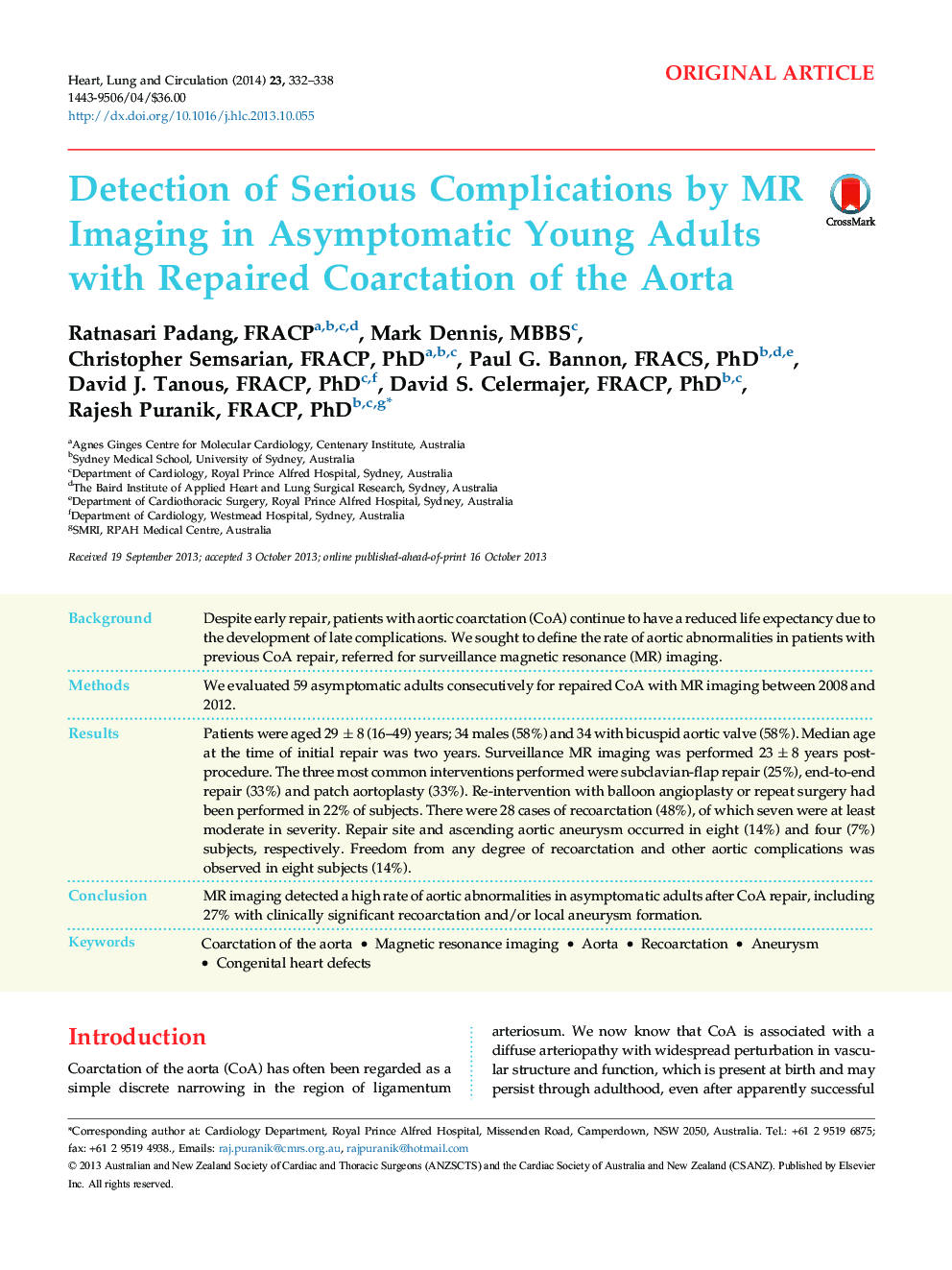| Article ID | Journal | Published Year | Pages | File Type |
|---|---|---|---|---|
| 2917209 | Heart, Lung and Circulation | 2014 | 7 Pages |
BackgroundDespite early repair, patients with aortic coarctation (CoA) continue to have a reduced life expectancy due to the development of late complications. We sought to define the rate of aortic abnormalities in patients with previous CoA repair, referred for surveillance magnetic resonance (MR) imaging.MethodsWe evaluated 59 asymptomatic adults consecutively for repaired CoA with MR imaging between 2008 and 2012.ResultsPatients were aged 29 ± 8 (16–49) years; 34 males (58%) and 34 with bicuspid aortic valve (58%). Median age at the time of initial repair was two years. Surveillance MR imaging was performed 23 ± 8 years post-procedure. The three most common interventions performed were subclavian-flap repair (25%), end-to-end repair (33%) and patch aortoplasty (33%). Re-intervention with balloon angioplasty or repeat surgery had been performed in 22% of subjects. There were 28 cases of recoarctation (48%), of which seven were at least moderate in severity. Repair site and ascending aortic aneurysm occurred in eight (14%) and four (7%) subjects, respectively. Freedom from any degree of recoarctation and other aortic complications was observed in eight subjects (14%).ConclusionMR imaging detected a high rate of aortic abnormalities in asymptomatic adults after CoA repair, including 27% with clinically significant recoarctation and/or local aneurysm formation.
